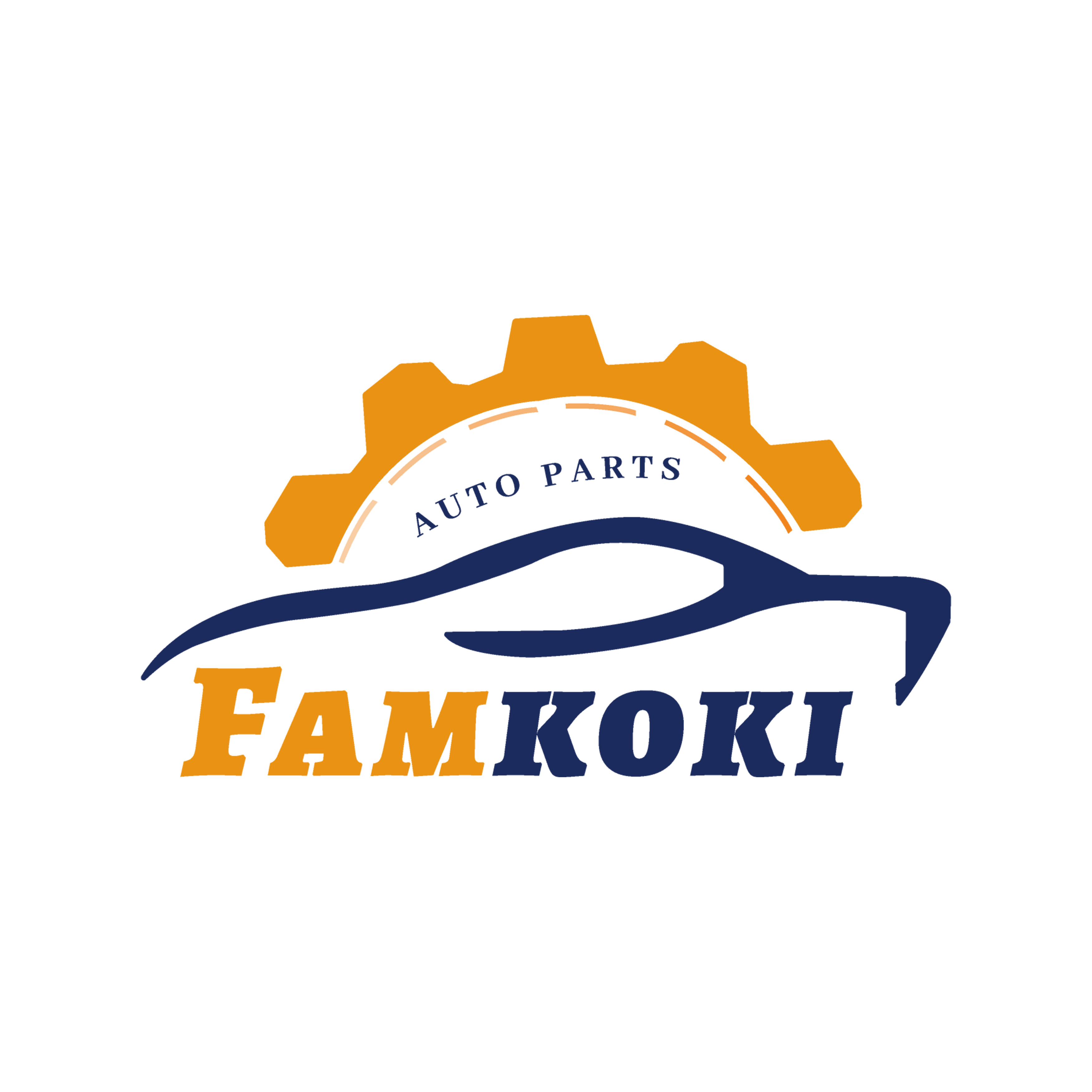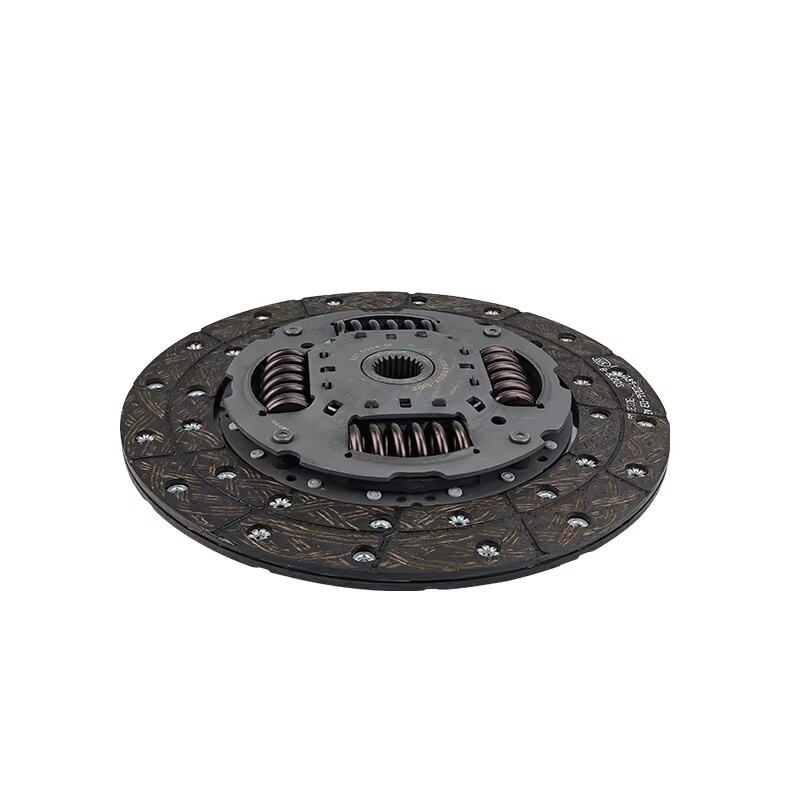Understanding Wheel Hub Systems and Their Role in Vehicle Safety
The Critical Role of Wheel Hubs in Vehicle Safety and Performance
The wheel hub is basically what connects the wheel to the axle, holding up the whole vehicle while also passing along all those forces when accelerating or stopping. When these hubs are kept in good shape, they make for smoother rides, less shaking around, and most importantly stop catastrophic problems like wheels falling off completely. Looking at numbers from the Commercial Vehicle Safety Alliance in 2023 shows just how serious this gets - fourteen percent of accidents involving big trucks happen because something goes wrong with these wheel components. That's not just a statistic on paper; it means real danger out there on the roads every day.
Core Components of Wheel Hub Systems and How They Work
Modern wheel hub assemblies consist of four integrated components:
- Hub body: Provides structural integrity and mounts directly to the axle
- Bearings: Enable smooth rotation using tapered roller or ball bearing designs
- Seals: Shield internal parts from contaminants and retain lubrication
- ABS sensors: Deliver real-time wheel speed data for anti-lock brakes and stability control
Together, these elements manage rotational loads up to 8,000 lbs in demanding applications while maintaining performance under prolonged thermal stress.
Real-World Consequences: Failures Due to Neglected Wheel Hub Maintenance
When exposed to salty conditions, hub assemblies that go without proper service tend to shed around 30% of their load bearing capability by the time they hit 50,000 miles on the odometer. A trucking company somewhere in the Midwest actually faced a massive $220k repair bill when old, degraded grease caused bearings to seize completely. This kind of scenario really drives home how dangerous it is to put off necessary maintenance work. Operators should watch out for telltale signs something's wrong - things like tires wearing unevenly across the tread, strange humming noises coming from under the vehicle while driving, or hubs showing discoloration patterns. These warnings usually show up before anything truly catastrophic happens, which is why regular inspections remain so important for preventing expensive roadside emergencies down the road.
Industry Shift: Growing Emphasis on Preventive Maintenance in Fleets
Preventive strategies now guide 58% of transportation companies, up from 42% in 2020. By combining scheduled servicing with telematics that track hub temperature and vibration, fleets cut unscheduled repairs by 71%, according to recent efficiency analyses.
Establishing a Baseline Maintenance Plan for Wheel Hubs
A comprehensive maintenance plan includes:
- Bi-annual inspections for cracks, wear, or seal damage
- Bearing repacking every 25,000–50,000 miles using lithium-complex grease
- Lug nut torque verification during tire rotations
- Post-repair road testing to confirm normal noise and heat levels
This approach extends hub life by 40% compared to reactive repairs and ensures compliance with DOT standards.
Recommended Inspection and Maintenance Frequency Based on Vehicle Type and Usage
Light-Duty vs. Heavy-Duty Vehicles: Different Maintenance Intervals for Wheel Ends
Maintenance frequency varies significantly by vehicle class. Light-duty vehicles typically require inspection every 25,000–30,000 miles under normal conditions, while heavy-duty trucks need checks every 15,000–20,000 miles due to higher operational loads.
| Vehicle Type | Standard Interval | High-Stress Adjustment* |
|---|---|---|
| Light-duty | 25k–30k miles | 20k–25k miles |
| Heavy-duty | 15k–20k miles | 10k–15k miles |
| *Applies to frequent towing, off-road use, or extreme payloads |
How Driving Conditions Affect Wheel Hub Maintenance Needs
Three key factors accelerate wear:
- Road surfaces: Gravel or salted roads increase abrasive damage
- Load frequency: Daily hauling above 75% of max capacity shortens intervals by 30%
- Climate: Humid or coastal regions demand more frequent corrosion checks
Data-Driven Insights: Fleet Studies on Optimal Wheel Hub Service Intervals
A 2023 analysis of 15,000 commercial vehicles revealed fleets using condition-based monitoring experienced 42% fewer unplanned repairs than those relying on fixed schedules. Urban delivery trucks required 18% more frequent lubrication than long-haul units due to stop-and-go demands. This tailored strategy reduced annual maintenance costs by $280 per vehicle while improving safety metrics.
Bearing Inspection, Repacking, and Lubrication Best Practices
Why Regular Bearing Repacking Prevents Premature Wheel Hub Failure
Dirt, dust, and old grease buildup are major culprits behind wheel hub failures in trucks and other heavy duty vehicles. When bearings spin at highway speeds, all that junk gets ground into the races and rollers, wearing them down over time. The oil itself breaks down too, losing what little protection it had left. Regular repacking helps flush out these nasty residues and brings things back to where they should be operationally speaking something the Machinery Lubrication folks definitely stress in their guidelines. Companies that stick to a quarterly maintenance schedule for their wheel ends see around 38 percent fewer replacement costs compared to shops only doing annual checks. Makes sense when you think about how much money can be saved across an entire fleet just by keeping those hubs clean and properly lubricated.
Step-by-Step Guide to Proper Bearing Inspection and Repacking Techniques
- Clean: Pressure-wash hubs to remove old grease and debris
- Inspect: Examine bearings for scoring, pitting, or blueing from overheating
- Repack: Hand-pack fresh grease into rollers until no air pockets remain
- Torque: Apply OEM-specified torque settings–under-tightening leads to looseness; over-tightening distorts races
Using color-coded grease guns prevents cross-contamination, a method validated in the 2023 Lubrication Program Assessment.
Is Annual Repacking Necessary? Evaluating Over-Maintenance vs. Protection
Most manufacturers suggest checking things every 12 months, but reality looks different depending on how hard equipment gets used day to day. Take cement mixers for instance they need their bearings repacked around every 15k miles because all that dust and grit wears them down so fast. Compare that to trucks pulling trailers on highways where bearings sometimes go 50k miles before needing attention. The numbers from a recent study of truck fleets back this up too. Vehicles that went past recommended maintenance schedules by just 20 percent ended up breaking down near roadsides almost three times more frequently than those kept properly maintained, especially problems coming from failed wheel hubs.
Creating an OEM-Aligned Greasing Schedule for Maximum Bearing Life
Align maintenance with both manufacturer guidelines and real-world usage data. For example:
| Vehicle Type | Standard Interval | High-Duty Cycle Adjustment |
|---|---|---|
| Long-Haul Trucks | 50,000 miles | 40,000 miles (mountain routes) |
| Delivery Vans | 25,000 miles | 15,000 miles (stop-and-go) |
This hybrid model minimizes unnecessary servicing while preventing lubrication-related failures. Fleets using condition-monitoring sensors report 27% longer bearing life compared to fixed schedules.
Building a Cost-Effective, Comprehensive Wheel Hub Maintenance Program for Fleets
Reducing Downtime with Proactive Fleet Wheel End Maintenance
Structured wheel hub maintenance reduces unscheduled downtime by 30–50% in commercial fleets, based on MHEDA cost models. Key proactive measures include:
- Visual inspections during tire rotations (every 25,000–50,000 miles)
- Lug nut torque checks within the first 50–100 miles after installation
- Infrared temperature monitoring to detect early-stage friction issues
A 2023 case study of 800 heavy-duty trucks showed fleets using preventive maintenance software achieved 18% lower repair costs and 40% fewer roadside breakdowns versus reactive approaches.
Key Protocols: Re-Torquing Wheels and Monitoring Lubricant Quality
| Maintenance Protocol | Direct Cost | Downtime Impact | Long-Term Savings |
|---|---|---|---|
| Wheel Re-Torquing | $12/service | Prevents 74% of wheel-offs | $4,200/incident avoided |
| Lubricant Analysis | $85/test | 92% early bearing defect detection | $8,000–$15,000 per hub rebuild prevented |
Grease replacement should align with brake service cycles where possible. Contaminated lubricant accounts for 23% of premature bearing failures, according to the Commercial Fleet Maintenance Report 2024.
Balancing Maintenance Costs with Long-Term Savings and Uptime
Fleets utilizing OEM-aligned service agreements report a 3:1 ROI on wheel end maintenance through:
- 28% longer hub assembly lifespan (vs. ad-hoc maintenance)
- 19% reduction in roadside service calls
- 14% improved fuel efficiency from optimized bearing friction
One major logistics provider slashed wheel-related warranty claims by 62% after adopting condition-based maintenance, proving strategic investment in hub care directly lowers total cost of ownership.
Frequently Asked Questions (FAQ)
Why are wheel hubs important for vehicle safety?
Wheel hubs connect the wheel to the axle and play a crucial role in bearing the weight of the vehicle and its forces during movement. Maintaining wheel hubs helps prevent accidents like wheels detachment.
How often should wheel hub maintenance be performed?
Maintenance frequency depends on the vehicle type and use. Light-duty vehicles should be inspected every 25,000–30,000 miles, whereas heavy-duty vehicles need checks every 15,000–20,000 miles.
What are the common signs of wheel hub failure?
Signs include uneven tire wear, strange noises while driving, and discoloration on the hub. These signs can indicate the need for immediate inspection and maintenance to prevent serious issues.
What’s involved in a comprehensive wheel hub maintenance plan?
A comprehensive plan includes bi-annual inspections, bearing repacking, lug nut torque verification, and post-repair road testing.
How does regular maintenance improve fleet operations?
Regular maintenance reduces unscheduled repairs, improves safety, prolongs the lifespan of components, and reduces costs such as roadside repairs and warranty claims.
Table of Contents
-
Understanding Wheel Hub Systems and Their Role in Vehicle Safety
- The Critical Role of Wheel Hubs in Vehicle Safety and Performance
- Core Components of Wheel Hub Systems and How They Work
- Real-World Consequences: Failures Due to Neglected Wheel Hub Maintenance
- Industry Shift: Growing Emphasis on Preventive Maintenance in Fleets
- Establishing a Baseline Maintenance Plan for Wheel Hubs
- Recommended Inspection and Maintenance Frequency Based on Vehicle Type and Usage
- Bearing Inspection, Repacking, and Lubrication Best Practices
- Why Regular Bearing Repacking Prevents Premature Wheel Hub Failure
- Step-by-Step Guide to Proper Bearing Inspection and Repacking Techniques
- Is Annual Repacking Necessary? Evaluating Over-Maintenance vs. Protection
- Creating an OEM-Aligned Greasing Schedule for Maximum Bearing Life
- Building a Cost-Effective, Comprehensive Wheel Hub Maintenance Program for Fleets
- Frequently Asked Questions (FAQ)
 EN
EN
 AR
AR
 FR
FR
 KO
KO
 PT
PT
 RU
RU
 ES
ES


